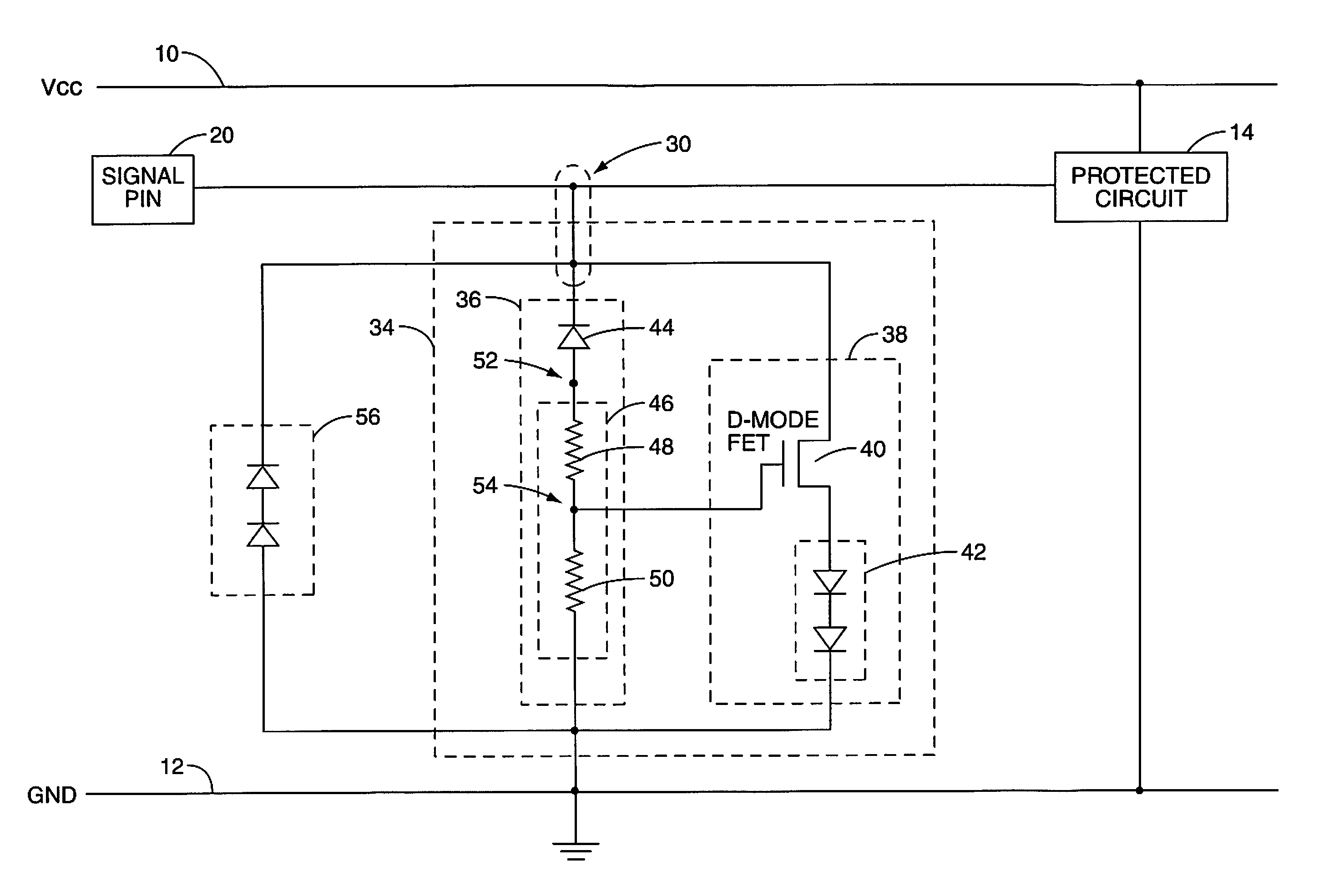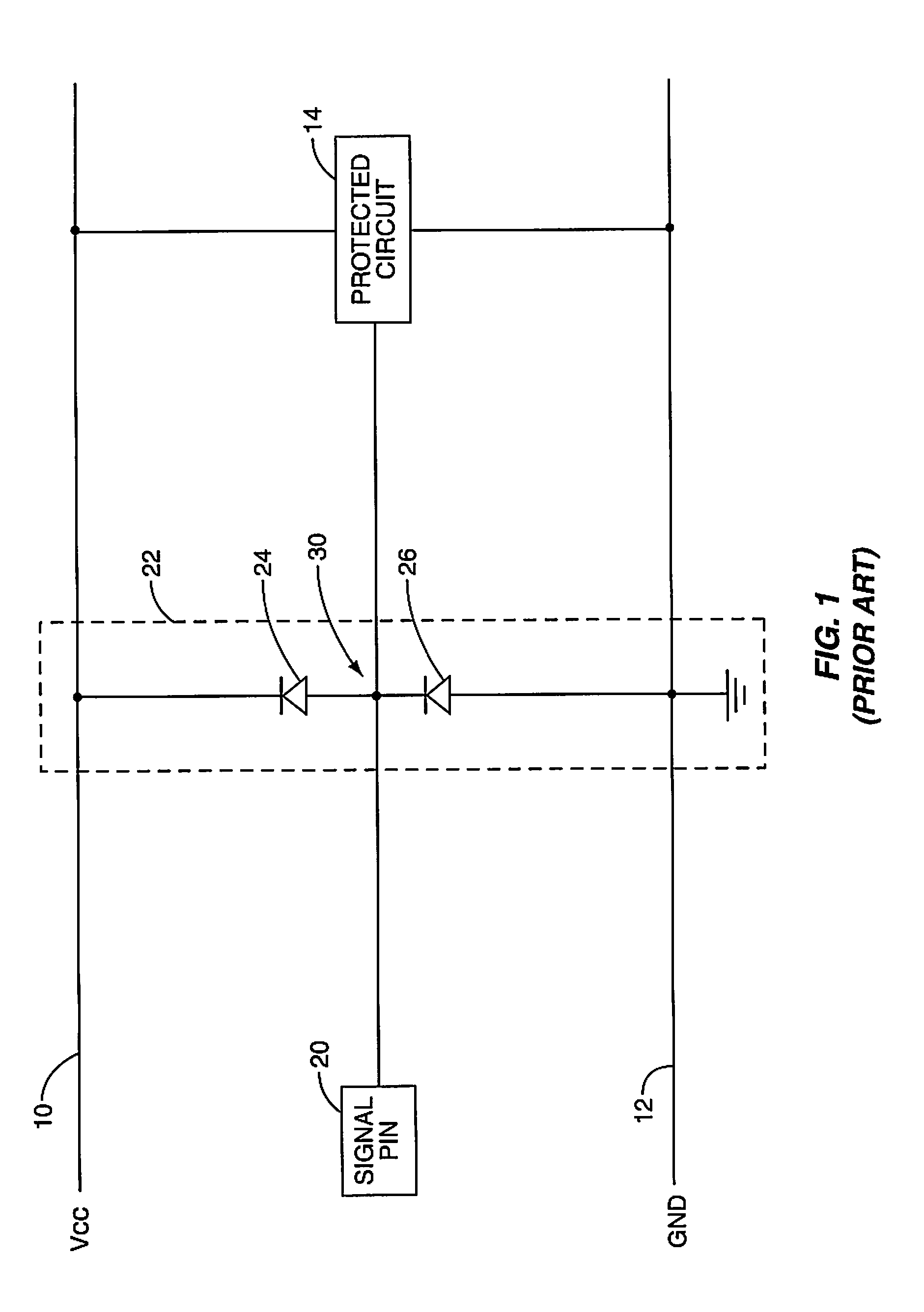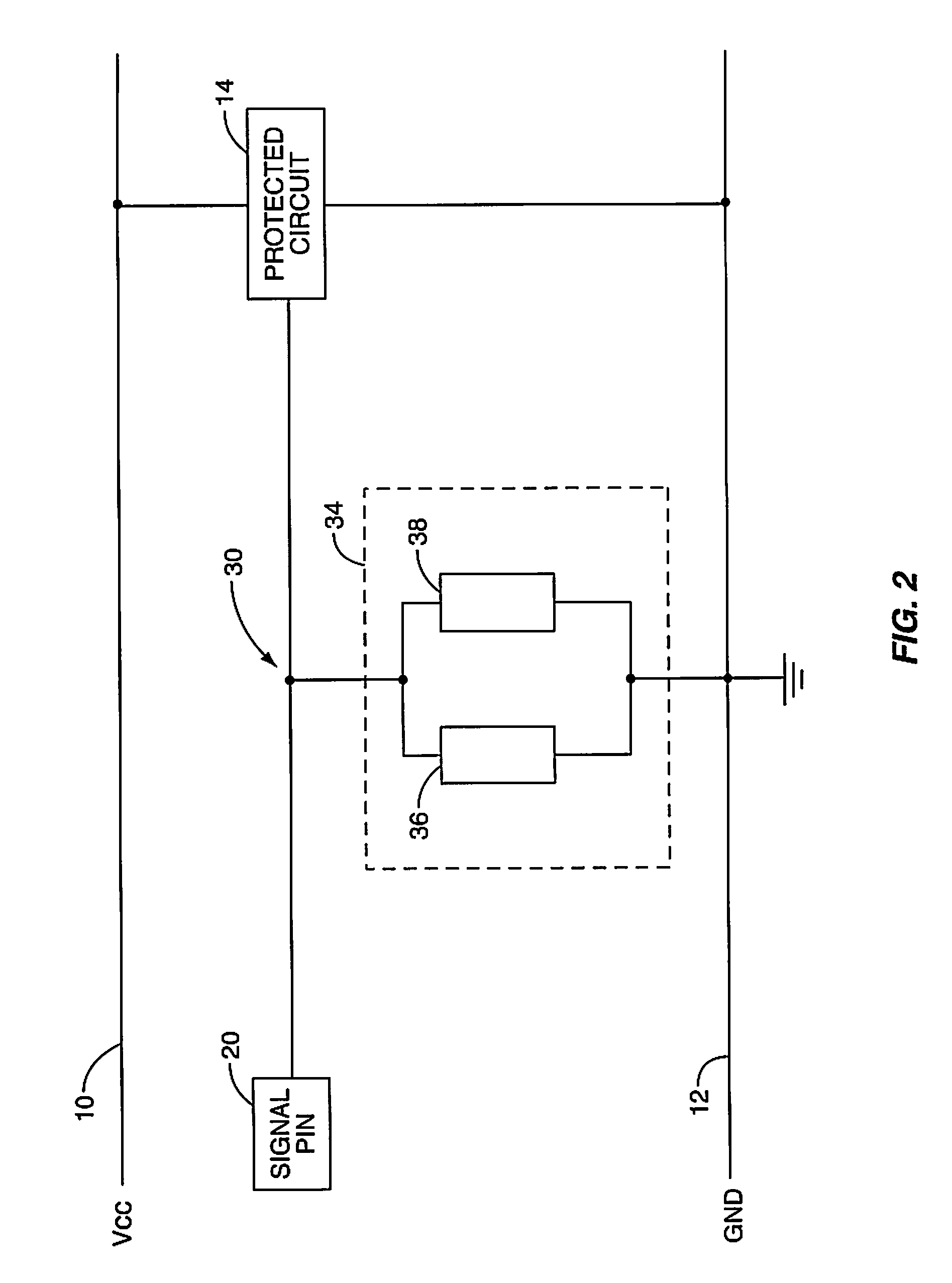On-chip ESD protection circuit for radio frequency (RF) integrated circuits
a protection circuit and integrated circuit technology, applied in the field of esd, can solve the problems of infancy of esd protection circuitry for newer technologies, the potential for destructive esd events has become more serious, and products, typically handheld devices, are much more prone to esd-induced damage, etc., to achieve low parasitic capacitance, low impedance path, and low on-state resistance
- Summary
- Abstract
- Description
- Claims
- Application Information
AI Technical Summary
Benefits of technology
Problems solved by technology
Method used
Image
Examples
Embodiment Construction
[0028]The embodiments set forth below represent the necessary information to enable those skilled in the art to practice the invention and illustrate the best mode of practicing the invention. Upon reading the following description in light of the accompanying drawing figures, those skilled in the art will understand the concepts of the invention and will recognize applications of these concepts not particularly addressed herein. It should be understood that these concepts and applications fall within the scope of the disclosure and the accompanying claims.
[0029]FIG. 2 illustrates an electrostatic discharge (ESD) protection circuit according an embodiment of the present invention, including a trigger sub-circuit and a main protection sub-circuit. An ESD protection circuit 34 is illustrated including a trigger sub-circuit 36 and a main protection sub-circuit 38. The trigger sub-circuit-circuit 36 will detect ESD surge events and trigger the main protection sub-circuit-circuit 38. The...
PUM
 Login to View More
Login to View More Abstract
Description
Claims
Application Information
 Login to View More
Login to View More - R&D
- Intellectual Property
- Life Sciences
- Materials
- Tech Scout
- Unparalleled Data Quality
- Higher Quality Content
- 60% Fewer Hallucinations
Browse by: Latest US Patents, China's latest patents, Technical Efficacy Thesaurus, Application Domain, Technology Topic, Popular Technical Reports.
© 2025 PatSnap. All rights reserved.Legal|Privacy policy|Modern Slavery Act Transparency Statement|Sitemap|About US| Contact US: help@patsnap.com



